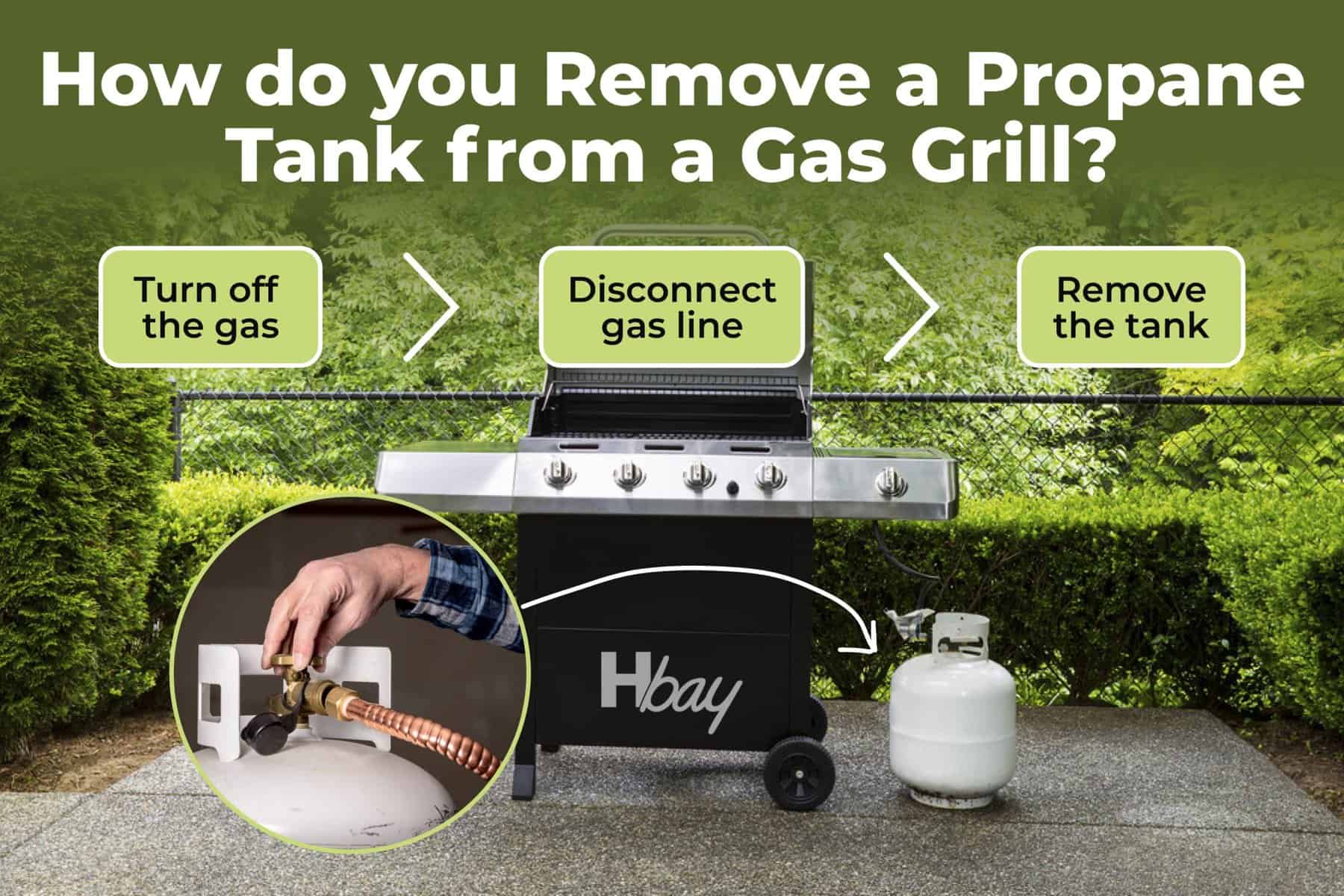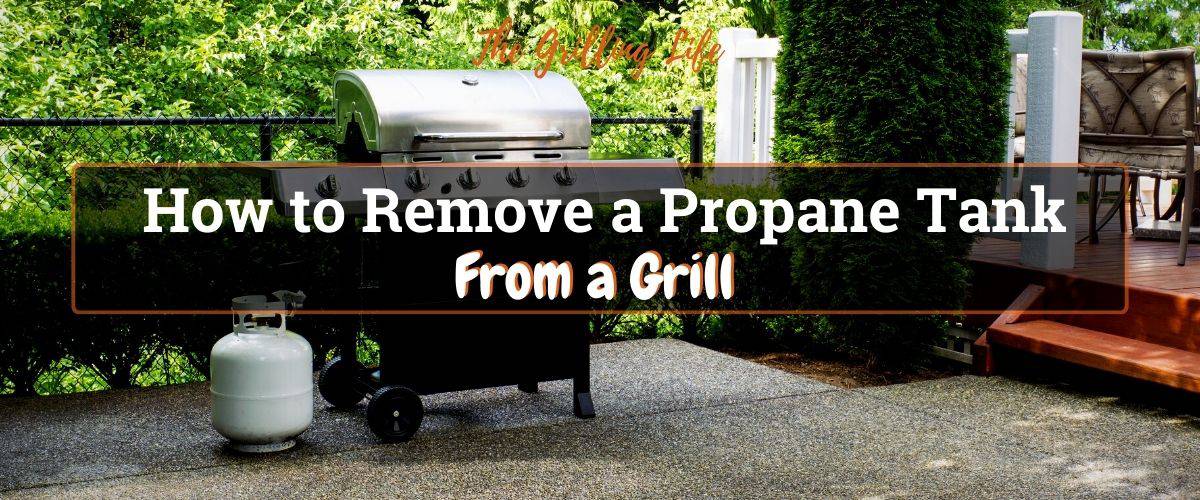How to remove propane tank from grill? Propane tanks are a common feature in many households, especially for those who enjoy grilling outdoors. While propane is a convenient and efficient fuel source, it is important to handle propane tanks with care, especially when it comes to their removal. Improper removal of propane tanks can pose serious safety hazards and risks. In this article, we will discuss the importance of proper propane tank removal and provide a step-by-step guide on how to safely remove your propane tank.
Proper propane tank removal is crucial for the safety of both you and your property. Propane is a highly flammable gas, and mishandling propane tanks can lead to leaks or even explosions. By following the correct procedures for removing a propane tank, you can minimize the risk of accidents and ensure the safety of yourself, your family, and your property.
Improper removal of propane tanks can also have environmental consequences. Propane tanks that are not disposed of correctly can leak harmful gases into the atmosphere, contributing to air pollution and potentially harming the environment. By taking the time to properly remove and dispose of your propane tank, you are doing your part to protect the environment.
Step-by-Step Guide: How to Safely Remove Your Propane Tank
Removing a propane tank may seem like a daunting task, but with the right knowledge and precautions, it can be done safely and efficiently. Here is a step-by-step guide on how to safely remove your propane tank:
1. Turn off the gas supply: Before removing the propane tank, it is important to turn off the gas supply. Locate the shut-off valve on the propane tank and turn it clockwise until it is fully closed. This will prevent any gas from escaping during the removal process.
2. Disconnect the tank: Once the gas supply is turned off, you can proceed to disconnect the tank from your grill or other appliance. Use a wrench to loosen the connection between the tank and the appliance. Be careful not to damage any hoses or fittings during this process.
3. Empty the tank: Before removing the tank, it is important to empty any remaining propane gas. This can be done by turning on the burners of your grill and allowing them to burn until the gas is completely depleted. Alternatively, you can use a propane tank gauge to check the level of gas remaining in the tank.
4. Store the tank properly: Once the tank is empty, it should be stored in a safe and well-ventilated area. Propane tanks should never be stored indoors or in enclosed spaces. It is also important to keep them away from heat sources and flammable materials.
Safety First: Precautions to Take Before Removing Your Propane Tank
Before removing a propane tank, it is important to take certain safety precautions to ensure your well-being. Here are some precautions you should take before removing your propane tank:
1. Wear protective gear: When handling propane tanks, it is important to wear protective gear such as gloves and safety goggles. This will protect you from any potential leaks or spills that may occur during the removal process.
2. Ensure proper ventilation: Propane gas is heavier than air and can accumulate in enclosed spaces, posing a serious risk of explosion or suffocation. Before removing a propane tank, make sure you are in a well-ventilated area, preferably outdoors.
3. Keep fire extinguishers nearby: In case of any accidents or emergencies, it is important to have fire extinguishers readily available. Make sure you know how to use them properly and keep them within reach during the removal process.
Tools You’ll Need: A Checklist for Propane Tank Removal
To safely remove a propane tank, you will need a few essential tools. Here is a checklist of tools you will need for propane tank removal:
1. Gloves: It is important to wear gloves to protect your hands from any potential leaks or spills during the removal process.
2. Wrenches: You will need wrenches of the appropriate size to loosen and disconnect the tank from your grill or other appliance.
3. Safety cap: A safety cap is used to cover the valve of the propane tank after it has been removed. This helps prevent any gas from escaping and ensures the safety of those around you.
4. Hand truck: If you are removing a large propane tank, a hand truck can be useful for transporting it safely and efficiently.
Tips and Tricks: Making Propane Tank Removal a Breeze
Removing a propane tank can be made easier with a few tips and tricks. Here are some tips to make propane tank removal a breeze:
1. Use a hand truck: If you are removing a large propane tank, using a hand truck can make the process much easier. This allows you to transport the tank without straining your back or risking injury.
2. Have a helper: Removing a propane tank can be a two-person job, especially if it is large or heavy. Having a helper can make the process smoother and safer.
3. Use lubricant: If you are having trouble loosening any connections or valves, applying some lubricant can help make the process easier. Just be sure to use a lubricant that is safe for use with propane.
What to Do with Your Old Propane Tank: Recycling and Disposal Options
Once you have safely removed your propane tank, you may be wondering what to do with it. It is important to dispose of or recycle your old propane tank properly to ensure its safe handling and minimize environmental impact.
One option for disposing of an old propane tank is to take it to a local recycling center or scrap metal yard. Many of these facilities accept propane tanks and will properly recycle or dispose of them. It is important to check with your local recycling center or scrap metal yard to ensure they accept propane tanks and to inquire about any specific guidelines or requirements.
Another option for disposing of an old propane tank is to contact your propane supplier. They may have a program in place for the proper disposal of old tanks. They can provide guidance on how to safely dispose of the tank or may even offer a tank exchange program where you can trade in your old tank for a new one.
Troubleshooting: Common Issues and How to Solve Them
During the propane tank removal process, you may encounter some common issues. Here are some solutions to common problems that may arise:
1. Stuck valves: If you are having trouble turning off the gas supply or disconnecting the tank due to stuck valves, applying some lubricant can help loosen them. Allow the lubricant to sit for a few minutes before attempting to turn the valve again.
2. Damaged hoses: If you notice any damage to the hoses or fittings during the removal process, it is important to replace them before using the tank again. Damaged hoses can lead to leaks or other safety hazards.
3. Leaks: If you detect a gas leak during the removal process, it is important to take immediate action. Turn off the gas supply, evacuate the area, and contact your propane supplier or emergency services for assistance.
Maintenance Matters: Keeping Your Grill and Propane Tank in Good Condition
Regular maintenance is key to keeping both your grill and propane tank in good condition. Here are some tips for maintaining your grill and propane tank:
1. Clean your grill regularly: Regularly cleaning your grill helps prevent grease buildup and ensures optimal performance. Clean the grates, burners, and other components of your grill according to the manufacturer’s instructions.
2. Check for leaks: Periodically check your propane tank for any signs of leaks, such as a hissing sound or the smell of gas. If you suspect a leak, turn off the gas supply and contact your propane supplier for assistance.
3. Inspect your propane tank: Regularly inspect your propane tank for any signs of damage, such as rust or dents. If you notice any damage, it is important to have the tank inspected or replaced to ensure its safe use.
When to Replace Your Propane Tank: Signs to Look Out For
Propane tanks have a limited lifespan and will eventually need to be replaced. Here are some signs that indicate it’s time to replace your propane tank:
1. Rust: If you notice significant rust on your propane tank, it is a sign that the tank is deteriorating and may be at risk of developing leaks. Rust can weaken the tank and compromise its integrity, so it is important to replace it as soon as possible.
2. Dents or damage: Any significant dents or damage to your propane tank can compromise its structural integrity and increase the risk of leaks or other safety hazards. If you notice any dents or damage, it is important to have the tank inspected or replaced.
3. Expiration date: Propane tanks have an expiration date stamped on them. This date indicates the maximum lifespan of the tank and should not be exceeded. If your propane tank has reached its expiration date, it is important to replace it with a new one.
DIY vs. Professional Removal: Which Option is Right for You?
When it comes to propane tank removal, you have the option of doing it yourself or hiring a professional. Both options have their pros and cons, and the right choice depends on your level of experience and comfort with handling propane tanks.
DIY removal can be a cost-effective option if you have experience with propane tanks and feel confident in your ability to safely remove them. However, it is important to educate yourself on the proper procedures and safety precautions before attempting DIY removal. This includes understanding how to turn off the gas supply, disconnect the tank, and store it properly.
On the other hand, hiring a professional for propane tank removal ensures that the task is handled by someone with the necessary expertise and experience. Professionals are trained in proper propane tank removal procedures and have the necessary equipment to safely handle and transport tanks. This can provide peace of mind and minimize the risk of accidents or mishaps.
Enjoying Your Grill with Peace of Mind
Proper propane tank removal is essential for the safety of yourself, your family, and your property. By following the steps and tips provided in this article, you can safely remove your propane tank and enjoy your grill with peace of mind.
Remember to always prioritize safety, wear protective gear, and follow proper procedures when handling propane tanks. By doing so, you can ensure a safe and enjoyable grilling experience for years to come.
Originally posted 2024-01-30 02:47:27.





